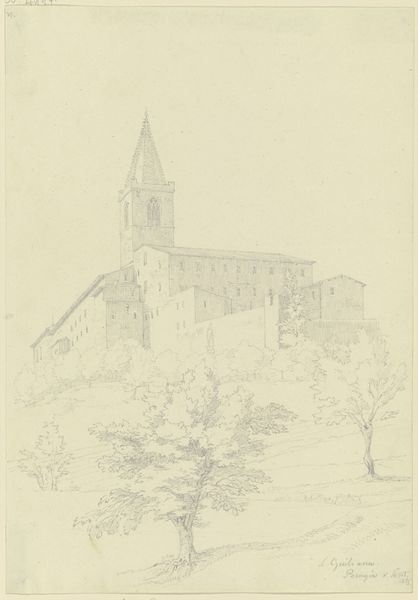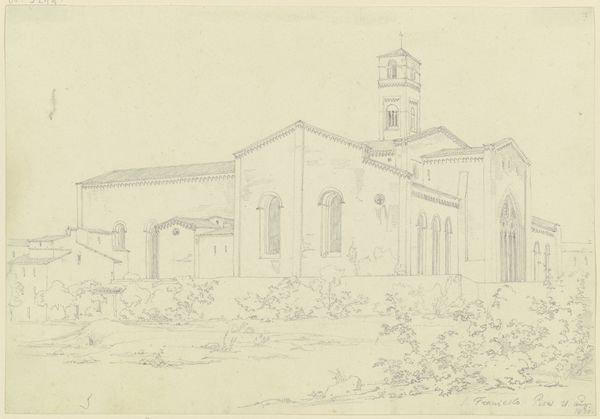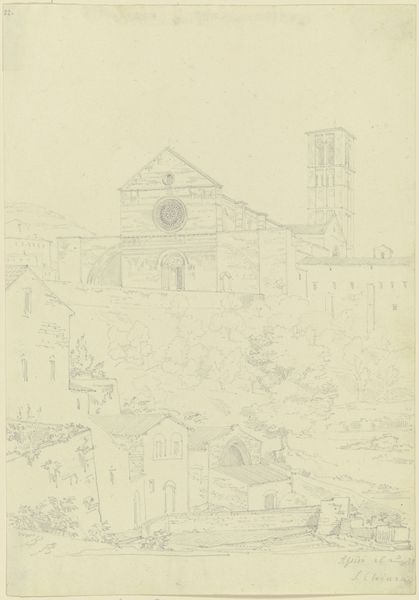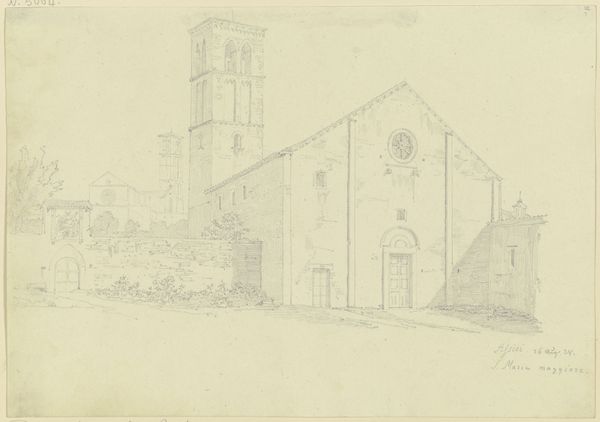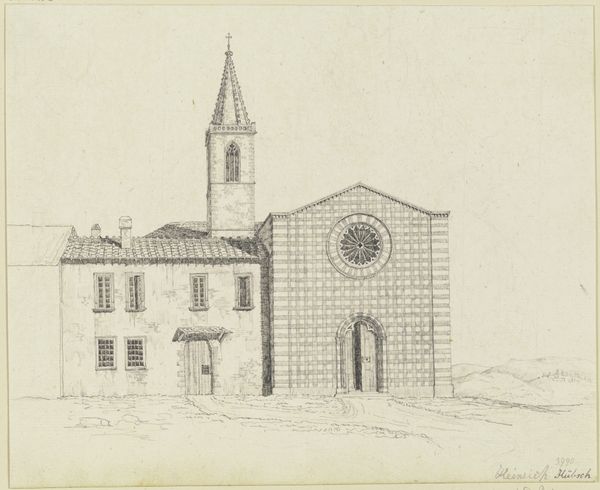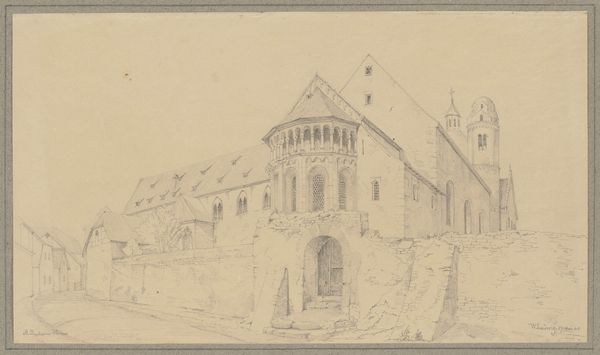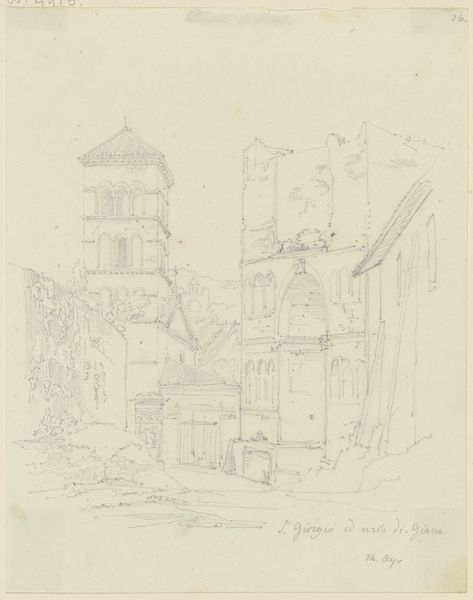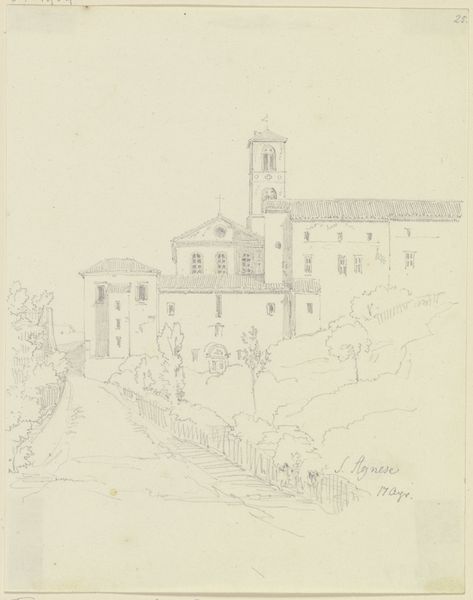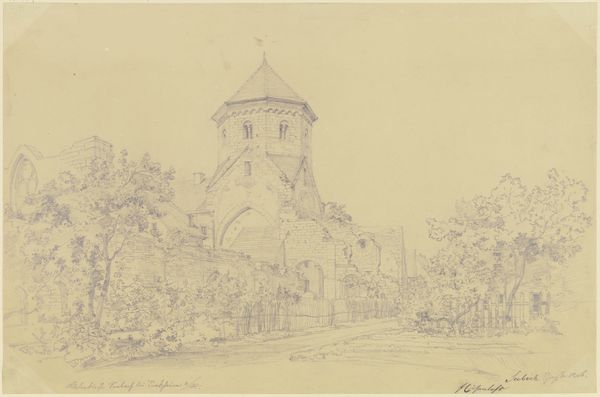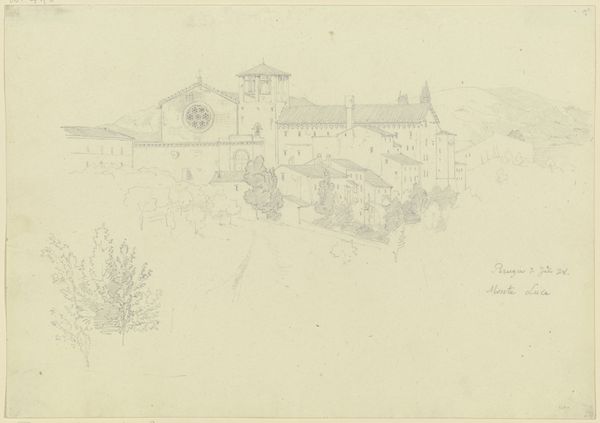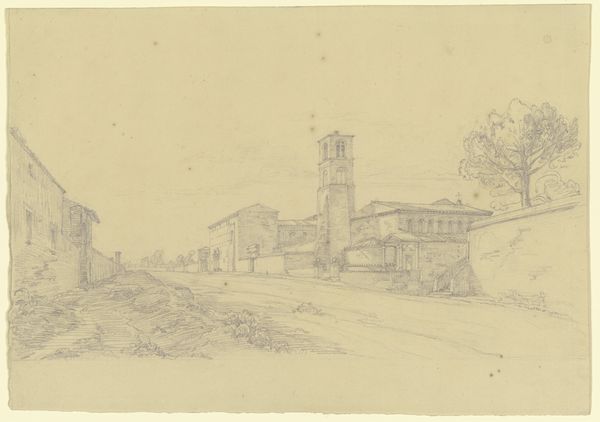
drawing, pencil, graphite, architecture
#
drawing
#
16_19th-century
#
landscape
#
etching
#
romanesque
#
pencil
#
graphite
#
architecture
Copyright: Public Domain
Curator: This pencil and graphite drawing is called "S. Giuliana in Perugia" by Friedrich Maximilian Hessemer, created in 1828. It's currently housed here at the Städel Museum. Editor: My first impression is that it’s ethereally tranquil, almost ghostly. The building seems to emerge from the landscape. Is it an abandoned priory? The stark simplicity is very arresting, quite understated, which adds to that mysterious vibe. Curator: I find it interesting to consider this in terms of the changing architectural representations. We see a clear Romanesque influence here, but processed through a very specific 19th-century artistic lens. Think about the availability of graphite pencils at this time. Their newfound accessibility altered drawing practices, fostering this kind of on-site, direct rendering. Editor: Ah, you're thinking about the tools of production, literally. I'm just caught by the quality of light here, how Hessemer’s captured it, and of course the building’s silhouette. What I see is that dance of light and shadow—a rather beautiful study in how those Romanesque forms hold the light, and maybe our attention as well. The building itself looks sturdy. Did the church suffer damage? Or is it the effect of time? It all makes for a moody contemplation on ruin, maybe? Curator: Or a careful accounting of architectural features. The drawing isolates the location. Focusing solely on the façade, we might miss the social activities that unfolded around this architectural site daily. Remember, the act of representing is never neutral. Editor: True enough, still the sketch itself breathes this feeling of timelessness. And I imagine, it's how an abandoned building might whisper secrets into the artist's ear, which I always find far more exciting to talk about. It’s a nice dialogue isn’t it? A sketch opens up between past architecture, history of craft and artist’s silent communication with his time. Curator: Indeed, a beautiful merging of form, method, and quiet dialogue, isn't it? It is the intersectionality between building techniques, modes of pencil usage, and artistic license which all merge, and make the artwork whole, complete, and available for our viewing pleasure.
Comments
No comments
Be the first to comment and join the conversation on the ultimate creative platform.
